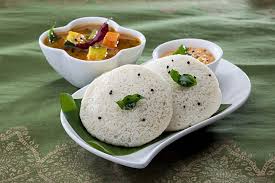
-By Kranti Karande
Idli is a staple Indian food. Have you seen how Idli is prepared?
Idli cannot be made just by mixing pulverized rice and lentil in a short time period. The cereals needed to make Idli must be soaked, milled and mixed to make a batter. The batter is then fermented properly to make dough rise to get Idli soft and spongy. Usually the fermentation period is overnight, however sometimes it takes longer for Idli batter to ferment and rise. What determines the Idli batter fermentation duration?
The length is dependent on how rapidly the microorganisms in the batter grow and ferment the batter. Some of you must have noticed that during hot and humid weather, Idli batter is fermented in short duration, while it takes longer during cold weather. It is because, in humid weather, the development of microorganisms is faster. But you may wonder which are the microorganisms that contribute to fermentation and how they bring about fermentation of Idli batter?

NCMR, NCCS Pune
Fermented foods are studied widely worldwide and food fermentation of a given geographical area is studied and popularized by native scientists of that region. To give an example, Kimchi, a fermented vegetable food, native to Korea is studied widely by Korean Scientists and has more than 1200 publications in international peer reviewed journals. Kimchi is very popular food in western world and even a Google doodle appeared in November, 2017 ‘Celebrating Kimchi’. However, the problem of Idli fermentation was initially addressed by a noted food microbiologist, Prof. K. H. Steinkraus at Cornell University, New York, USA in 1965. There are only 50 published articles on Idli although Idli has several beneficial health effects. Therefore, Dr. Milind Patole’s research group at NCMR, NCCS Pune revisited the Idli fermentation problem and curiously investigated microorganisms involved in Idli batter and their role in fermentation process.
They carried out this study using techniques of microbiology and molecular biology such as amplicon sequencing MiSeq, quantitative PCR etc. Both culturally dependent and independent experiments were conducted, i.e. 354 bacteria were isolated from Idli batter samples collected from two vendors in two geographically distant destinations and one fermented in laboratory.
Interestingly, they reported that Lactic Acid Bacteria (LAB) is the dominant bacterial strain contributing to fermentation, and other bacterial strains identified in the Idli batter are Bacillales and Enterobacteriales. LAB constituted 86% of the total population of bacteria. Results also highlighted that most microorganisms belonged to phylum Firmicutes (70%) and Proteobacteria (22%). Further analysis was carried out up to species level identifying strains that contribute to the fermentation of the Idli batter.
Idli fermentation closely resembles the sourdough in which the release of carbon dioxide action is carried out by bacteria rather than yeast. Dr. Patole’s group also studied the physio chemical properties and growth kinetics during Idli fermentation. They dealt with a question of how fermentation of Idli is different than other fermented compounds. They report that succession of bacterial population is observed in fermentation of Idli batter which is not so common in fermentation of other food items.
Researchers also reported that Weisella emerged as the major genus in fermentation of Idli batter. An experiment also reported that only Weisella isolates can independently ferment the Idli batter. The Weissella confusa isolates also showed beneficial phytase- and B12-producing activities, signifying the abundance and role of this organism in fermentation of Idli batter.
Do you know that fermentative microorganisms not only make Idli soft and spongy but also contribute to the taste and flavor of the final product Idli?
This study provided an analysis of Idli batter fermentation using modern molecular tools giving a detailed account of the bacterial diversity that makes it possible to ferment. Because of the succession of the bacterial population the Idli fermentation is more complex than other food fermentation. With microbiota understood in this study, we might be able to speed up the process of Idli fermentation and the beneficial properties of these microorganisms make this food item suitable for the delivery and supplementation of beneficial probiotic organisms. Further study should be done by isolating microorganisms from the Idli batter collected from all geographical locations in India.
Reference : https://www.ncbi.nlm.nih.gov/pubmed/31053581
